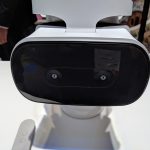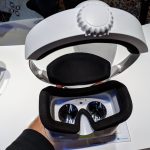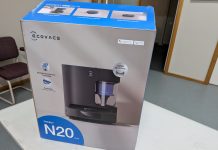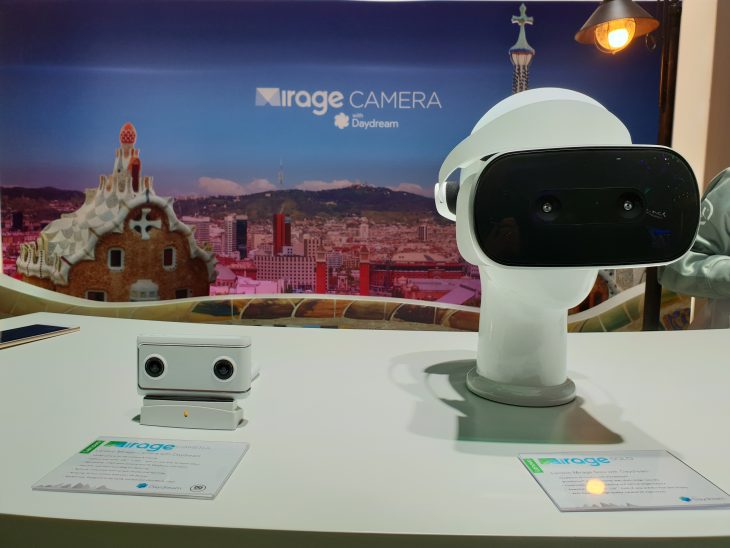
Earlier this year, after being teased at Google I/O, Lenovo finally unveiled the Lenovo Mirage Solo, the first standalone Daydream View headset as well as the Mirage Camera that supports Google and YouTube’s VR180 standard. The headset and camera are here at Mobile World Congress, so we thought we’d check them out.
The headset is supremely comfortable to wear with cushioning all around your eyes where the action happens, as well as the adjustable band that encircles your head. The headset has super high resolution 5.5″ QHD LCD panel, and is powered by a Snapdragon 835 SoC, 4GB of RAM and has 64GB of storage, with a microSD slot for more space. The battery is charged by USB-C and has about 7 hours of life in it – impressive.
The Mirage Camera is an interesting device, after a flurry of 360-degree cameras hit the market it seems Google wants to go with 180-degree vision instead. Lenovo has seen the release of the Mirage Solo headset as a perfect companion device to launch the Mirage Camera with.
The camera has dual fish-eye lenses in front of 13MP sensors on the front, which snag 4K pictures or video of everything in front of you. You can store the footage either locally on the 16GB of storage built-in, upload it to Google Photos or even stream it live to YouTube! The removable battery pack will give you about 2 hours of battery life and you charge it through USB-C.
The quality of the camera is pretty good and if you have a VR Headset you can check out Jason and I in a shot from the Mirage Camera on Google Photos – here.
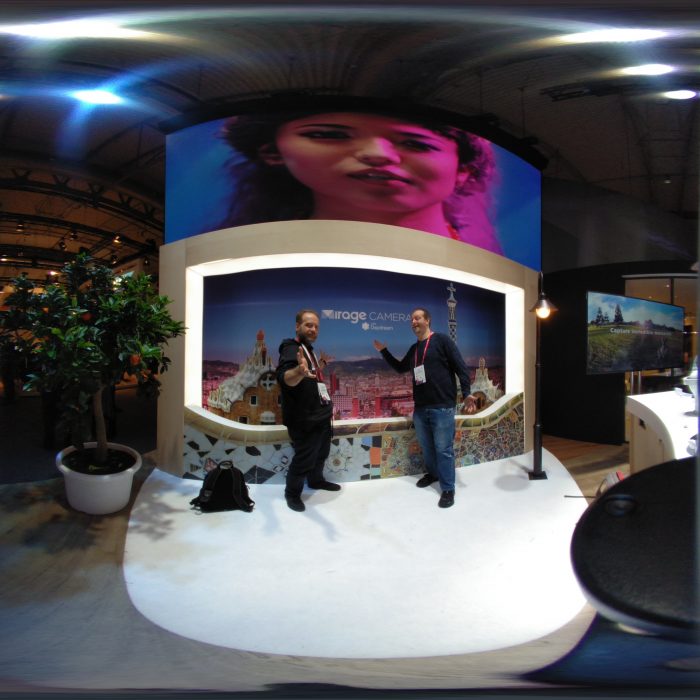
In terms of when you can get your hands on the Mirage Solo and Mirage Camera, Lenovo says both the Mirage Solo and Mirage Camera are heading to market around Q2 for under $500USD – there’s rumours it could be sub-$400 each but Lenovo reps weren’t willing to be more concise about pricing unfortunately.


